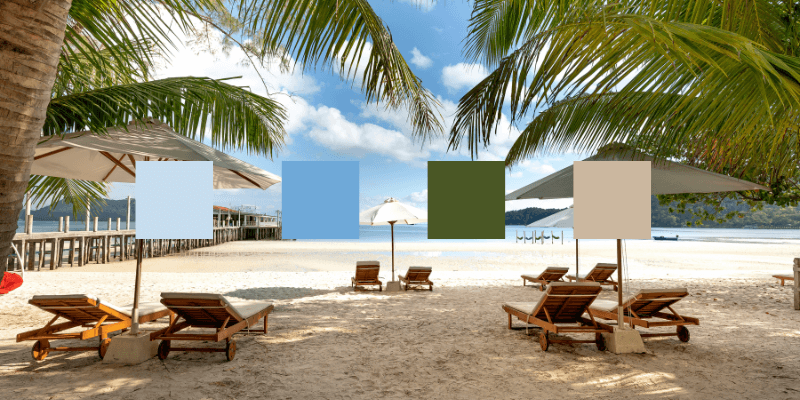If you don’t know what are color palettes in Photoshop. Here’s a quick answer: Photoshop color palette is the section where you can choose colors for your project. The color palette is accessible in the toolbar and contains a number of tools for selecting colors.
Adobe Photoshop comes with many default color palettes but sometimes it’s not exactly the colors you may be looking for. That’s why I like to create my own color palette sometimes.
My name is Aly, I am Adobe Photoshop certified, and today I will be showing you how to create your own color palette in Adobe Photoshop.
Table of Contents
Key Takeaways
- You can create a color palette from any image you like.
- Photoshop has many default color palettes, which we can alter if chosen.
- You should have a basic understanding of color theories before creating custom color palettes.
How to Create a Custom Color Palette in Photoshop
If you don’t like the default colors Adobe has chosen, that’s alright we will create our own with a few simple steps.
Step 1: Use an image that inspires you and is consistent with the tone and style of your current project. Open it in Photoshop and make any necessary changes. When you’re through editing, blend the adjustment layers with your image or flatten the image.
I am going to be using a beach image because I like the coloring throughout the photo and want my palette to have similar colorings.
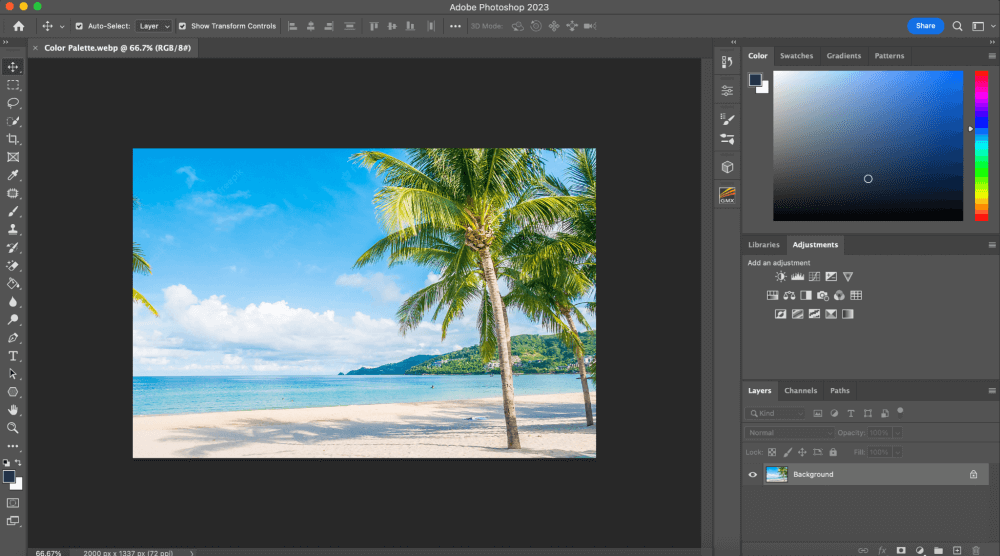
Step 2: Once your image is ready to go, the first thing I like to do is to crystalize my image by putting a filter on it. I do this so I will have an easier time selecting the colors I want.
You can do this by going up to the top menu and finding Filter > Pixelate > Crystalize.
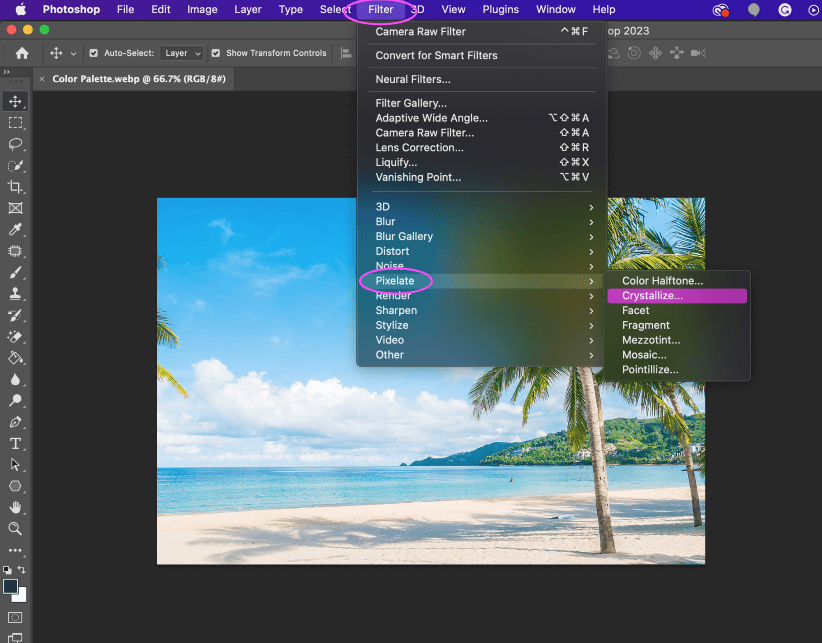
Step 3: Enter the desired cell size. The more cells you have, the fewer color selections you will have. I typically use 40 since I like having more alternatives. Once you’ve entered your cell size, go ahead and click OK.
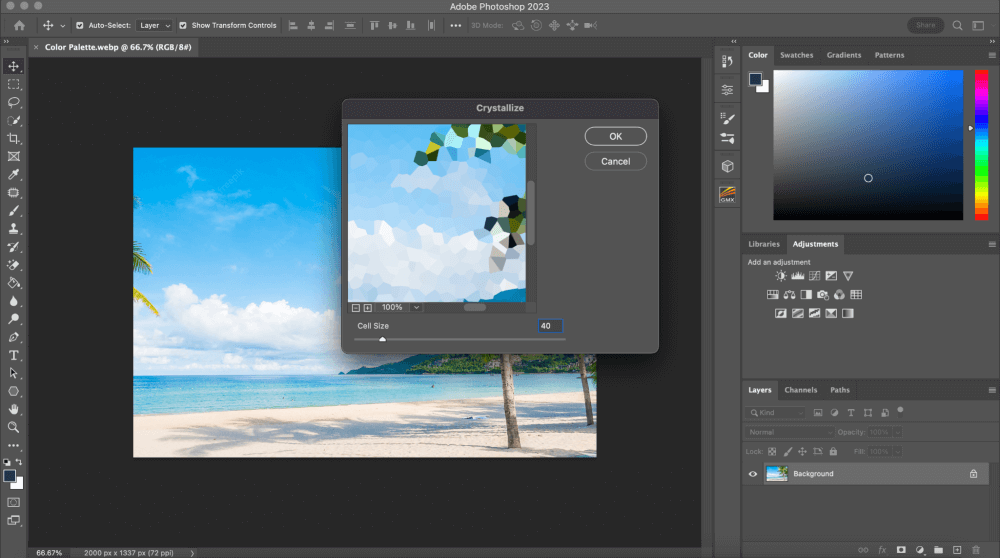
Step 4: Find the Eyedropper Tool from the left-hand side menu and pick a color on the image you want in your color palette.
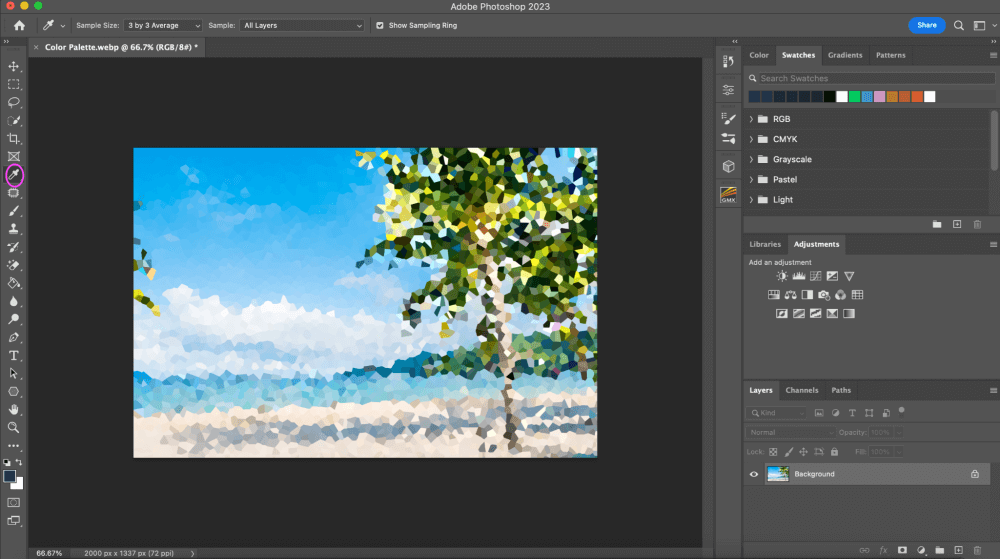
Step 5: Click on the color you want in your palette, once you do this select the Create New Swatch button to add it to the swatches window as I did below.
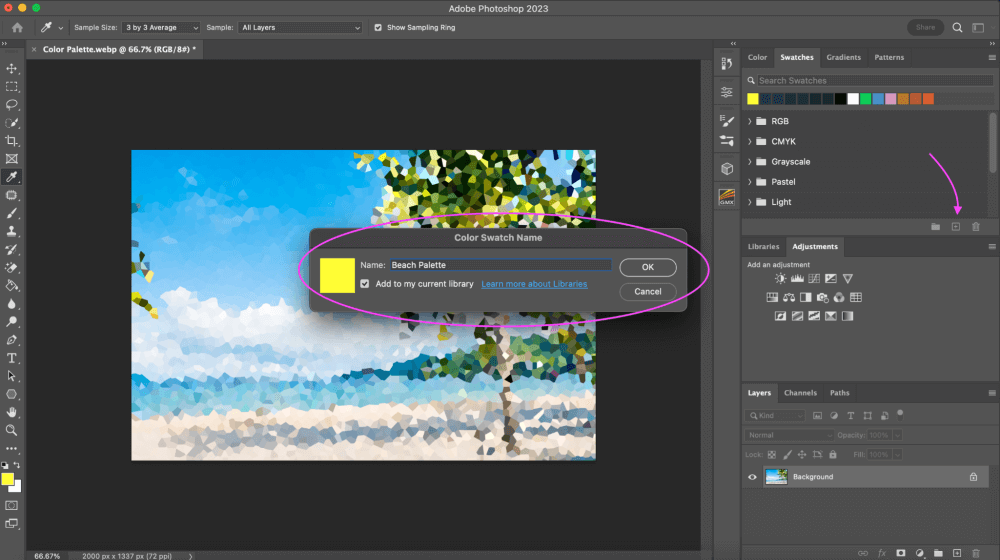
Step 6: Now, you have created a swatch! After you’ve made your changes, click the OK button to save them. Your new colors will subsequently be shown in the toolbar. If you want to return to the original colors, click the Reset button.
Continue to use the eyedropper tool to create more swatches that will be added to the top of your swatches folder. If you want to create a group of swatches, click the Create New Group button next to create a swatch and you will have a group of the colors you’ve chosen.
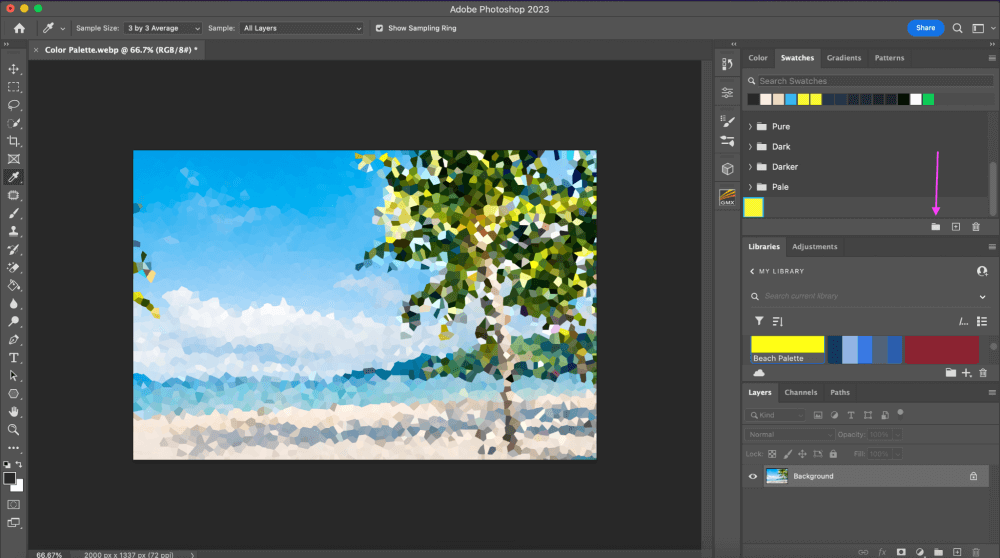
Pro Tips
- You shouldn’t try to alter the color palette in Photoshop if you are unfamiliar with the program or don’t understand the color theory well. Your photographs can end up looking garish or unprofessional if you do this.
- To rearrange your swatches, highlight a color by clicking on it. Then, click and drag the color to where you want it to appear; the blue line that appears as you drag it across the swatches will indicate where you’ve dragged it.
Final Thoughts
So simple right? Creating custom color palettes in Photoshop is not only really easy, but it can be fun to pull colors from existing images to turn them into your own. Personally, I have quite a collection of color swatches in my library since I never know when I will need a certain custom color.
You can utilize what you’ve learned about creating a custom color palette in Photoshop to help you design your next project.
A well-balanced and appealing Photoshop color pallet may quickly transform a graphic design job or other creative endeavors from dull to stunning. If you want your design to soar, one of the first things you should do is find out how to create the right custom color palette in Photoshop.
Any questions about creating a custom color palette in Photoshop? Leave a comment and let me know.
About Aly Walters